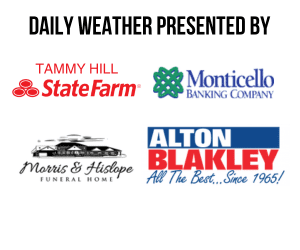 Here are the WMO’s Hurricane Names for 2025
Here are the WMO’s Hurricane Names for 2025
The 2025 Atlantic hurricane season starts June 1, but we already know what all the storms will be named.
As USA Today reports, the list of storm names is created by the World Meteorological Organization (WMO) well in advance of the hurricane season. But we don’t yet know how many storms will form this year, or how strong they will be. Could there be a Tropical Storm Andrea, or perhaps a Hurricane Karen in our future? How about Tropical Depression Jerry?
A tropical storm gets a name when its sustained winds reach 39 mph; it becomes a hurricane when its winds reach 74 mph. A typical Atlantic hurricane season averages about 14 tropical storms, seven of which spin into hurricanes, based on weather records that date from 1991 to 2020.
Forecasts about the predicted severity of the 2025 hurricane season will be coming out in the weeks and months ahead from private, university and government groups.
Here is the list of names for the 2025 Atlantic Hurricane Season
The names are given out in alphabetical order, and each new storm gets the next name on the list. There are no Q, U, X, Y, or Z names because the WMO says there is a lack of names that begin with those letters.
- Andrea
- Barry
- Chantal
- Dexter
- Erin
- Fernand
- Gabrielle
- Humberto
- Imelda
- Jerry
- Karen
- Lorenzo
- Melissa
- Nestor
- Olga
- Pablo
- Rebekah
- Sebastien
- Tanya
- Van
- Wendy
Eastern Pacific Hurricane Names
There is a separate list of tropical storms and hurricanes that form in the eastern Pacific Ocean (you’ll notice they include X, Y and Z in this list):
- Alvin
- Barbara
- Cosme
- Dalila
- Erick
- Flossie
- Gil
- Henriette
- Ivo
- Juliette
- Kiko
- Lorena
- Mario
- Narda
- Octave
- Priscilla
- Raymond
- Sonia
- Tico
- Velma
- Wallis
- Xina
- York
- Zelda
The eastern Pacific season begins on May 15, more than two weeks earlier than the Atlantic season, but these hurricanes seldom have any direct impact on the U.S.
There is also a separate list of names for Central Pacific hurricanes, which can occasionally hit or impact Hawaii. In addition, there are separate lists for typhoons in the western Pacific and tropical cyclones in Australia and the Indian Ocean.
Why – and how – do hurricanes get names?
Before hurricane forecasters started naming storms, they referred to storms by their current location or trajectory, saying something like “the storm 500 miles east-southeast of Miami.” But six hours later, the storm’s position would change, confusing the issue and making it harder for the general public to keep tracking.
Also, when more than one storm was going on at the same time, making it clear which storm was being described made the job even harder. In 1953, the U.S. began using female names for hurricanes. By 1979, male and female names were being used. You may have noticed that in the lists above, the names alternate between male and female.
—
Photo Credit: Rokas Tenys / Shutterstock.com



